#pelle-k
Text
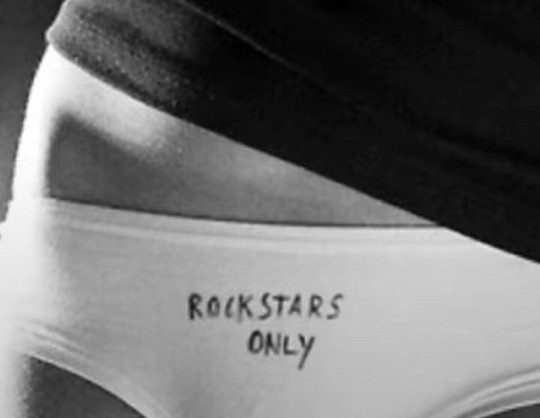

୨⎯ Red waves ⎯୧
Pelle ohlin x Reader
.・。.・゜✭・.・✫・゜・。. .・。.・゜✭・
Tw:period oral,AFAB! Reader,cursing,hair pulling,pet names, reader being in pain from cramps,oral fem receiving,slight fluff,slight cnc, Dom!pelle
.・。.・゜✭・.・✫・゜・。. .・。.・゜✭・.
Laying in bed,you wiped little tears off your face, your cramps had been so painful and your boyfriend Pelle had been gone all day with the band working on their new song. You were curled up in your favorite fuzzy blanket, the stuffed animal Pelle had bought you in hand,when you heard the door open and your boyfriend call out to you.
“Sweetheart I’m home dude varg was getting on my last fucking nerve tod- baby? Oh baby are you okay?” He says as he walks into the room and sees you a crying mess in your shared bed.
“Y yeah m’just having really bad cramps”
You say as you sniffle and look at him with glossy eyes.
“Aww my poor baby” he says as he pulls you in for a hug,
“You know what would make you feel better” he says with a smirk on his face
You assumed he meant a nice movie and a cuddle sesh but oh we’re you wrong.
“What?” You say as you move to get in a more comfortable position
“If I gave you some head” he says as he rubs your tummy
“Pelle no! Thats nasty im not gonna let you give me h head when I’m on my period!” You said to him, even though some head sounded good right now you never had it when you were on your period so you were unsure.
“Oh baby but I wasn’t asking you” he cooed as he pulled the blanket off of your body and got on top of you and started to plant sweet but firm kisses along your jawline moving down to your neck.
“Fuck Pelle please let’s just do something else” you pleaded with him, it’s not that you didn’t want him to eat you out, you were just embarrassed,what if he was grossed out?
“Shhh baby let me make you feel good you’ll like it I promise,also you don’t really have a choice now do you?” He let out a light chuckle before pulling your pants and panties down,you hid your face in embarrassment but he didn’t care he started kisses your thighs and finally moved his face right at your pussy, he let out a groan as he kicked a stripe from your entrance all the way to your swollen clit.
“F-fuck Pelle please oh my god”
You moaned out forgetting about ever feeling embarrassed in the first place, “that’s right baby just relax, god you taste so damn good” he said diving right back into you, after he spent some time licking your entrance he focused on your aching clit,sucking and giving it little kitten licks.
After some time you felt that knot of pleasure in your tummy coming undone and you grabbed onto his hair and grinder your hips against his face, desperate for more
“Fuck Pelle im gonna cum please please” you moaned out as he gripped into your hips tighter,that’s definitely gonna leave a bruise. Finally the cord snapped and you screamed Pelle’s name as he gave your pussy tiny kitten licks to help you come down from your high.
“You did so good baby” he says as he comes up to kiss you, you didn’t care that he had your blood all over his face, you just wanted to taste him.
You made out with him heavily as he gripped your hair trying to pull you in closer.
“I love you baby” he said as he peppered kisses all over your face
“I love you too now let’s clean this blood off” you said with a light chuckle.
The rest of the night was filled with cuddles and kisses from Pelle!
An:AHH THANK YOU FOR ALL YOUR SUPPORT SORRY THIS KNE TOOK SO LONG IVE BEEN BUSY, FEEL FREE TO REQUEST ANYTHING!!!
#rory culkin#pelle ohlin#pelle#lords of chaos#dead mayhem#mayhem band#jack kilmer#smut#fluff#cnc k!nk
145 notes
·
View notes
Note
for the blorbo bingo (only if you feel like it): rasmus, marco and pelle 💛


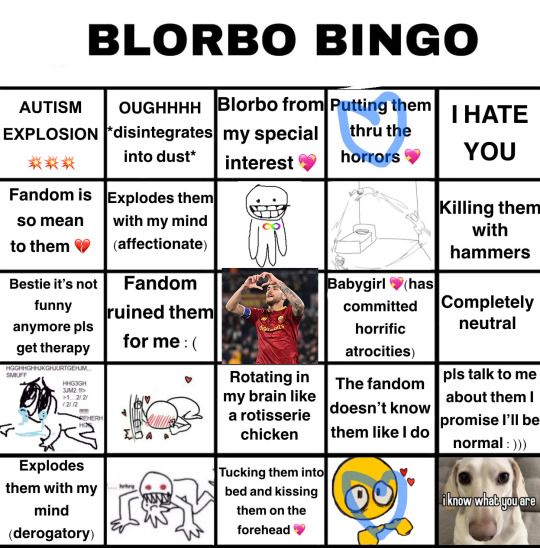
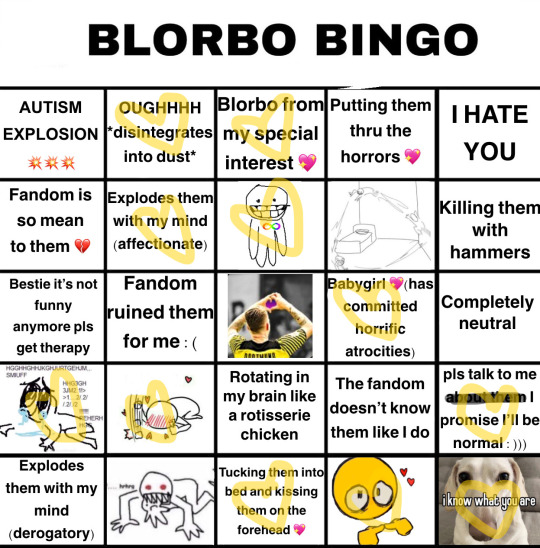
last one is for you hehe 😙 thanku for indulging meeee
ask me about anyone for bingo
#asking me about all my faves i see you 👀#i guess rasmus is my blorbiest blorbo i got a bingo!!#the half heart for him on the therapy one is cos its not that tragic yet but its on the way klfkjsfdl#the half hearts for marco about the fandom is more about the dfb respect him you dummies see how yall flopping from karma#also he needs more happy moments pls hes been through enough#and for pelle i just realised how normal i am about him lmao#i think its when everyone on dash is losing their minds about him i like to join in and encourage the unhinged behaviour heheehe#and finally i love you judith 💛❤️#the committed horrific atrocities is about the old hag and k*mmich slander btw(completely justified)#ask
3 notes
·
View notes
Text
Oda and kishimoto: *pretty much don't kill any of their characters*
Gege and fushimito: lol anyway—
#i know its not the same stories#but pell is still alive#and for naruto last arc there wasnt much (major) characters death for a war with enemies such as kaguya and madara#but jjk and csm —#they really dont care do they#so ruthless#jujutsu kaisen#jjk#csm#author: *dont kill many characters* fans: thats not very realistic but k#author: *kills enough characters now and then for you to worry for the ones still alive* fans: how dare you
5 notes
·
View notes
Text
......La mia pelle è colma
di farfalle...
di ali in sussulto..
Svolano sui prati e si godono il miele
Il sole esiste per loro
quello rovente
immenso
più antico dei tempi..
K. Boyle

102 notes
·
View notes
Text
“Essere stati amati tanto profondamente ci protegge per sempre.
È una cosa che ci resta dentro, nella pelle.”
J. K. Rowling

31 notes
·
View notes
Text
Essere stati amati tanto profondamente
ci protegge per sempre,
anche quando la persona che ci ha amato non c’è più.
È una cosa che ci resta dentro, nella pelle. ❤️
Joanne K. Rowling
13 notes
·
View notes
Text
“Mi ha baciata così lentamente, con la bocca aperta, che ogni singola parte del mio corpo la pelle, le clavicole, gli incavi dietro le ginocchia, tutto dentro di me si è riempito di luce.”
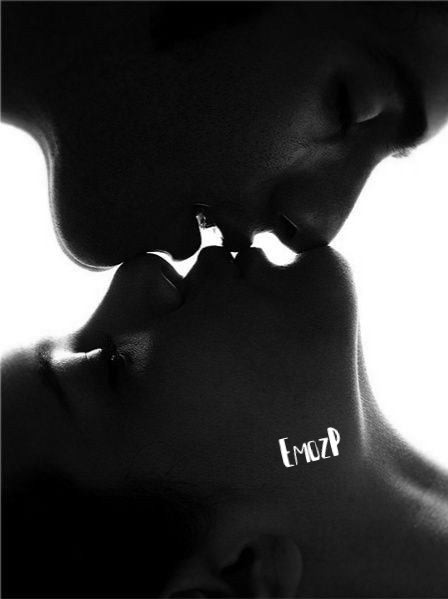
*K. Stockett *
9 notes
·
View notes
Text
Mestruare nei mesi estivi è una delle esperienze più devastanti che una persona possa sperimentare.
E non solo perché sei gonfia come un pallone, ti fa male la schiena, l'assorbente ti dà irritazione (sensoriale e non), il caldo accentua il sanguinamento e la pressione ti scende sotto terra.
Ma perché se hai la malsana idea di mettere il naso fuori di casa (e vivi a Milano) ti troverai circondata da una masnada di fiche atomiche coi loro vestitini svolazzanti, i loro capelli in piega perfetta e la loro pelle perfettamente asciutta e inspiegabilmente incapace di sudare, mentre tu hai la maglietta fradicia perché oltre al caldo estivo, il crollo degli estrogeni ti dà le vampate, i capelli da pazza perché quando ti sei svegliata avevi voglia di morire (grazie progesterone in caduta libera) e te li sei tirata su con la prima pinza che hai trovato e il portamento di una novantenne con una mano sui lombari che ti stanno facendo impazzire.
E niente.
Grazie Chip Taylor.
31 notes
·
View notes
Audio
Lingthusiasm Episode 75: Love and fury at the linguistics of emotions
Emotions are a universal part of the human experience, but the specific ways we express them are mediated through language. For example, English uses the one word “love” for several distinct feelings: familial love, romantic love, platonic love, and loving things (I love this ice cream!), whereas Spanish distinguishes lexically between the less intense querer and the stronger amar. Conversely, many Austronesian languages use the same word for the concepts that English would split as “fear” and “surprise”, while many Nakh-Daghestani (Northeast Caucasian) languages use the same word for the cluster that English splits into “fear”, “anxiety”, and “grief”.
In this episode, your hosts Gretchen McCulloch and Lauren Gawne get enthusiastic about the layers of language that are involved in emotions, from how emotion words form different clusters of related meaning in different language families to how the way your face shape changes when you smile affects the pitch of your voice. We also talk about how our understanding of how to talk about emotion changes throughout history and our lifespan, and how bilingual people feel differently about emotional words in their different languages.
Read the transcript here.
Announcements:
Thank you so much for celebrating our 6th anniversary with us! We appreciated all the love and support on social media, and it was great to see you recommending us to other language fans. Thank you to anyone who made an irl recommendation of the podcast, we appreciate you too!
In this month’s bonus episode we get enthusiastic about stylized Oldey Timey English! We talk about contexts in which pseudo-archaic forms get used, from Gretchen's recent experience with names and titles in a 1492 papal election roleplaying game, to how the language handbook of the Society of Creative Anachronism balances modern-day desires for gender-neutral language with creating historic-feeling titles, and a 1949 academic article cataloguing business names in the New York City phonebook that began with "ye".
Join us on Patreon now to get access to this and 60+ other bonus episodes, as well as access to the Lingthusiasm Discord server where you can chat with other language nerds.
Here are the links mentioned in the episode:
Emotion semantics show both cultural variation and universal structure
‘Why Doesn’t Ancient Fiction Talk About Feelings?’ - Nautilus article
‘Language Development and Emotional Expression’ by Lois Bloom
‘Alexithymia and levels of processing: Evidence for an overall deficit in remembering emotion words’ from Journal of Research in Personality
Example of Emotion Wheels
‘The Preponderance of Negative Emotion Words in the Emotion Lexicon: A Cross-generational and Cross-linguistic Study’ by Robert W. Schrauf & Julia Sanchez
‘'Stop Doing That, Ia Komu Skazala!': Language Choice and Emotions in Parent—Child Communication’ by Aneta Pavlenko
Lingthusiasm Episode ‘Making machines learn language - Interview with Janelle Shane’
‘‘Happy talk: Perceptual and acoustic effects of smiling on speech’ by V. C. Tartter
‘Perceptual cues in non-verbal vocal expressions of emotion’ by Disa A Sauter, Frank Eisner, Andrew J Calder, & Sophie K Scott
‘On the Differences in Prosodic Features of Emotional Expressions in Japanese Speech according to the Degree of the Emotion’ by Yasuki Hashizawa, Shoichi Takeda, Muhd Dzulkhiflee Hamzah, Ghen Ohyama
‘Acoustic-phonetic properties of smiling revised – measurements on a natural video corpus’ by Helen Barthel & Hugo Quené
‘The voices of anger and disgust: Acoustic correlates in three languages’ by Marc D. Pell & Areej Alasseri
‘Relevant Angry Affect Slows Response Time To Commands’ by Aleah Combs
‘Beyond lexical meaning: The effect of emotional prosody on spoken word recognition’ by Seung Kyung Kim & Meghan Sumner
You can listen to this episode via Lingthusiasm.com, Soundcloud, RSS, Apple Podcasts/iTunes, Spotify, YouTube, or wherever you get your podcasts. You can also download an mp3 via the Soundcloud page for offline listening. To receive an email whenever a new episode drops, sign up for the Lingthusiasm mailing list.
You can help keep Lingthusiasm advertising-free by supporting our Patreon. Being a patron gives you access to bonus content, our Discord server, and other perks.
Lingthusiasm is on Facebook, Tumblr, Instagram, Pinterest, and Twitter.
Email us at contact [at] lingthusiasm [dot] com
Gretchen is on Twitter as @GretchenAMcC and blogs at All Things Linguistic.
Lauren is on Twitter as @superlinguo and blogs at Superlinguo.
Lingthusiasm is created by Gretchen McCulloch and Lauren Gawne. Our senior producer is Claire Gawne, our production editor is Sarah Dopierala, and our production assistant is Martha Tsutsui Billins. Our music is ‘Ancient City’ by The Triangles.
This episode of Lingthusiasm is made available under a Creative Commons Attribution Non-Commercial Share Alike license (CC 4.0 BY-NC-SA).
100 notes
·
View notes
Text

ANCHE LA CASA NELLA PRATERIA NELLA LISTA NERA
Nell'elenco idiota degli idioti finti antirazzisti anche la bellissima serie ''la casa nella prateria'' e i libri di Laura Ingalls Wilder a cui la serie e' ispirata. E perche'? Forse perche' le vite dei bianchi sono politicamente scorrette? O perche' lo e' famiglia?
La famiglia Ingalls e' molto unita, molto cristiana, ogni storia e' un messaggio che da valore ai valori,tutte le puntate sono insegnamenti d'amore che nascono nella famiglia per essere moneta corrente nella societa', in alcuni episodi ci sono anche personaggi neri e indiani: viene denunciata l'ingiustizia dell'epoca nei loro confronti ( 1870-1890), ingiustizia a cui gli Ingalls si sottraggono. Ho letto un bellissimo articolo di Melissa Gilbert ( Laura Ingalls nella serie) in cui ammette il suo stupore nel duro attacco alla serie..forse affermare che la famiglia e la spiritualita' sono valori non derogabili e' politicamente scorretto..come affermare che il sole sorge ogni mattina. Il grande scrittore Gilbert K. Chesterton fu un profeta quando disse che si sarebbe dovuto sguainare la spada per osservare che l’erba è verde in primavera.
L’Occidente terminale ha trovato il suo nemico definitivo, l’ultimo da sgominare, la famiglia appunto, con tutti i principi esistenziali, comunitari e morali che rappresenta. Sarebbe più esatto affermare che il nemico del progressismo trasversale – nato a sinistra, pagato a destra, che rappresenta, per disgrazia, l’asse delle società postmoderne- è la natura. L’attacco vero, assoluto, è infatti contro l’impero della natura, il creato dei credenti. Nulla di ciò che ha disposto è approvato dal transumano contemporaneo. I bambini non devono avere un padre e una madre, addirittura non è bene che si distinguano tra maschietti e femminucce; la sessualità tra uomo e donna è solo uno tra i tanti “orientamenti”, il più fastidioso, giacché porta a nascite indesiderate. Chi crede nella famiglia “tradizionale “(a proposito, non cadiamo nella loro trappola, quel modello non è tradizionale, ma naturale!) è uno sfigato.
I toni utilizzati dal nemico che ci vuole distruggere, nemico è chi il nemico fa, sono talmente volgari, disgustosi e sovreccitati da ricordare un pessimo intellettuale del dopoguerra, Ugo Vittorini. Un suo libro sulla resistenza si intitolava Uomini e no. A questo siamo tornati, la qualità di essere umano è revocata senza appello a chi non la pensa come loro. L’intera armata progressista è ormai intrisa dei peggiori istinti che attribuisce all’ odiato Altro. Sono razzisti etici, suprematisti, poiché la loro ragione è unica, autoevidente, non ha bisogno di dimostrazione, tanto meno di abbassarsi alla discussione. I signori del progresso stanno lasciando nelle nostre mani una battaglia fondamentale, per nulla confessionale, anzi laicissima. Le idee di famiglia e di matrimonio sono un elemento centrale dell’ingresso delle comunità umane nella civiltà. Distruggerle significa regredire di migliaia di anni, uscire dal recinto della legge – altra conquista della civilizzazione – e precipitare negli istinti, nella giungla del “poliamore” caro a mondialisti .
I figli sono prodotti da ordinare sul mercato, statura, colore della pelle, sesso, pardon genere. Osceni cataloghi sono disponibili in rete, ma i nazisti non sono loro, i caini antiumani del progresso, bensì chi richiama all’accoglienza della vita, chi smaschera lo schiavismo sessuale, la compravendita di ovuli e sperma, la riduzione zoologica dell’uomo, pratiche come l’utero in affitto che avrebbero fatto indignare Karl Marx. Presto avremo le nozze a tempo, il problema è come fare con i figli. Ma esiste la soluzione: possono essere affidati a cooperative, comuni collettive o allo Stato, imponendo di non farli crescere secondo istinto biologico naturale. Essenziale è che si estirpi la famiglia: totalitarismo disgustoso mascherato da emancipazione.
In tutto questo orrore una serie il cui perno e' la famiglia e' da debellare, censurare, abbattere,insieme alle statue, ai simboli, e all'occidente tutto. Ma noi paladini della civilta' non staremo a guardare inerti, noi combatteremo per difendere la famiglia, i bambini, e la vita: la vera vittima della tagliola del politicamente corretto e del mondialismo.
24 notes
·
View notes
Text
fur, money, adventure: mechanisms of colonialism and survivance
riel ✰ | march, 2023
“Of all the things on earth, the motherland is the most important
and sacred to us because we inherited it from our ancestors,”
- Louis Riel

Fig. 1, Wilson. I. Former Jean Caron Sr. House, Batoche Saskatchewan. Image courtesy of I. Wilson and Parks Canada
I am Red River Métis, descending maternally from historic Métis families by the names of Berthelet, Caron, Ste. Germain, Larivière, Dazè, Dubois, and Boudreau; we come from the Red River Settlement in Manitoba and Batoche, Saskatchewan. My Berthelet family members were employees of the North-West Company and community leaders in the town of Pointe à Grouette, now Ste. Agathe (St. Onge). My fifth great uncle Jean Caron Sr. fought in the Battle of Duck Lake of the North-West Resistance of 1885, with his sons and under the command of Gabriel Dumont, Jean Caron Sr’s house still stands in Batoche to this day (fig. 1). I introduce myself in this way, the traditional way of the Métis to situate myself on this land and contextualise my knowledge and experiences.
My practice serves to counter the settler-colonial understanding of Métis people and our history and establish us as a people who have been practising survivance for generations. With the help of aesthetics of survivance I oppose mechanisms of colonialism; aesthetics including the Hudson’s Bay Company’s bloody legacy, the monuments and public art installed throughout Calgary, the suburban cowboys that come out of hiding in their McMansions on the outskirts of the city, riding their steel steeds, raised trucks, to the summer Stampede. The aesthetics of survivance are “[...]more than survival, more than endurance, or mere response, [...] stories of survivance are the creases of sovereignty,” (Vizenor, 15). In her 2019 book The North-West is Our Mother by Jean Teillet, the author compares the birth of the Métis Nation to human birth; messy, bloody, painful. Our history is vastly complex and controversial in the eyes of the average Canadian settler today. It is a history that makes settlers uncomfortable, confused, sometimes defensive and angry in response to lack of knowledge and this ignorance is often no fault of their own. Canada has a carefully curated canon of history that we are all spoon-fed in school until given the chance to learn the other sides of this history, to think critically and hear stories of survivance.

Fig. 2, The Bay “Shopping is Good” advertisement, 2000. Courtesy of the HBC History Foundation
Countering aesthetics of survivance, The Hudson’s Company has developed their own aesthetics of colonialism. “Fur! Money! Adventure! That [is] what the Hudson’s Bay Company territory had to offer Englishmen and Canadians three hundred years ago,” (Sealy, 1). From the very beginning of the point blanket, with its iconic stripes on white wool, traded for a single beaver pelt to an advertisement from the year 2000 (fig. 2). An image of a nuclear family wearing matching white outfits in a clean white room. Everything accented with green, red, yellow, and indigo stripes, down to the scarf that the grandmother is knitting, referencing the histories of trade and handmade goods long abandoned by the HBC in favour of their modern department store model and multiple aesthetic rebrands throughout the years after the industrial revolution (Toneguzzi). The advertisement simply states, “Shopping is Good, Toronto”. Pro pelle cuttem, a pelt for a skin, a skin for a skin.

Fig. 3, Starr, Riel. Image of the original HBC logo, downtown Calgary. Image courtesy of the artist.
The HBC shield on a building in downtown Calgary (fig. 3) is a grim reminder of the bloody birth of this country, laughing in my face. As Billy Ray Belcourt puts it: “Canada is still in the business of gunning down NDNs. […] Despite the stories of progress and equality at the core of Canada’s national identity, a long tradition of brutality and negligence is what constitutes kinship for the nation of citizens sat atop the lands of older, more storied ones. […] What I can do is love as though it will rupture the singularity of Canadian cruelty.” (Belcourt, 5)
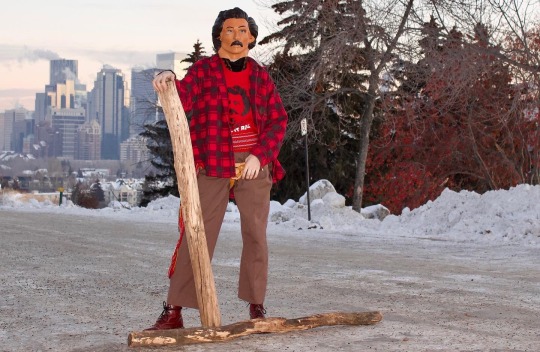
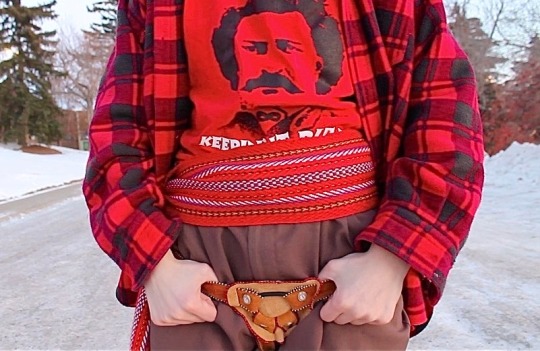
Fig. 4, 5, Starr, Riel. Otipemisiwak Fantasy Husband, 2022. Courtesy of the artist.
A Spectacle of Me for You: Otipemisiwak Fantasy (2022-present) is an ongoing body of work that explores the Métis identity through a modern and Indigiqueer lens, and through humour and the NDN belly laugh (Whitehead). The work consists of a series of photographs of myself wearing a costume I created using a combination of found and handmade garments. In the photographs from 2022 titled Otipemisiwak Fantasy Husband, (figs. 4 and 5) which have been printed in the form of stickers and two different postcard designs, the character Otipemisiwak Fantasy Husband (OFH), the masked trickster, poses with wood leftover from building a Red River cart in 2022. The aesthetics of survivance often incorporate embodying the skewed image that settlers have of the savage Indian, over exaggerating it so that that the joke remains in our own hands, and we can laugh at the ignorant moniyaw. In these photographs OFH is wearing a red and black lumberjack flannel over a red shirt with a black graphic of Louis Riel’s Face and white text that reads “Keeping’ it Riel,”. Around his waist is a ceinture fléchée, and a beaded leather strap on harness worn over brown dress pants. On his head is a latex mask of Louis Riel, his skin is placid and his features cartoonish, in the style of the masks of American presidents used in the 1991 film Point Break (directed by Katherine Bigelow) (fig. 6).

Fig. 6, Patrick Swayze, James Le Gros, Bojesse Christopher, and John Philbin in Point Break (1991), dir. Katheryn Bigelow. Image courtesy of Twentieth-Century Fox.
This work explores the aestheticization of colonialism through these political figures and latex masks which can be attributed to the abstraction of the real person from their caricature in history and in the cultural zeitgeist. One postcard design contains a full body shot of the character in a comically dominant pose with a log positioned suggestively between his legs, standing in for the strap on harness’s missing toy. The second design is a close-up shot of the character’s pelvis, the strap on harness visible with his thumbs hooked casually on the straps.
Referencing other Indigenous artistic personas such as Adrian Stimson’s “Buffalo Boy” and Lori Blondeau’s “Belle Sauvage” (fig. 7), my artwork including OFH satirises the settler-colonial understandings of Louis Riel as a violent traitor to the government by pointing to the ways his story has grown into a mythology of sorts in the eyes of Canadians in a similar manner to other related figures like the former presidents represented in Point Break.

Fig. 7, Stimson, Adrian; Blondeau, Lori. Belle and Boy’s Savage Buffalo Happy Hour. Image courtesy of Adrian Stimson and Lori Blondeau.
Like Stimson’s Buffalo Boy, my character represents an exaggerated Métis identity in order to “[…] camp up colonialism, sexuality, and authenticity,” embodying the trickster archetype like Buffalo Boy in the words of Stimson, “he’s campy, ridiculous, and absurd, but he is also a storyteller, who exposes cultural and societal truths,” (Rice, Taunton, Stimson). OFH mimics the over-sexualized settler-colonial perception of Indigenous masculinity, sexuality, and queerness and is an exploration of the ways in which my identity is tokenized: sexually, spiritually, academically, and culturally.
A Spectacle of Me for You: Otipemisiwak Fantasy is a way of participating in the phenomenon within contemporary Métis art of Louis Riel related kitsch objects that flood markets across the Métis homeland. Alongside and juxtaposing red and white Canadian kitsch that litters tourists' traps and contemporary art galleries across this land, appears the stoic face Louis Riel, gazing out at the country that has developed since his murder in 1885. As Marilyn Dumont puts it: “Riel is dead, but he just keeps coming back,” (70) Contemporary artists like Jessie Ray Short embody Louis Riel by taking on his likeness as a costume. The short film Wake up! (2015) (fig. 8) is a queering of this popular trend.

Fig. 8, Short, Jessie Ray, still from Wake Up!, 2015, video with sound, 5:58 min. Courtesy of the Artist, via Mount Pleasant Community Art Screen
The artist, transforms herself into Louis Riel by applying facial hair, a wig, and clothing to mimic the most famous portrait of Riel in a drag-esque performance. The work asks, “How do you explain a culture in small talk?” and is an example of the “re-examining the cultural significance of Louis Riel [that] allows us to consider the ways in which we can question representation while still respecting the importance this history holds.” (Junker)
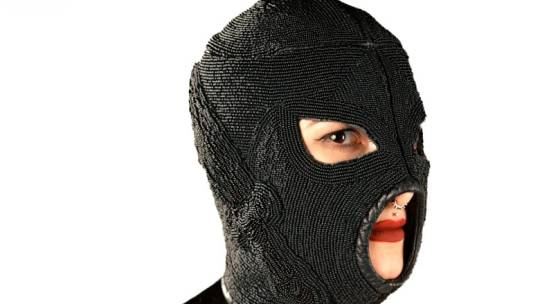

Fig. 9 (left), Danger, Dayna. Digital print of Adrienne Dagger, wearing one of Dayna Danger's fetish mask. Image courtesy of the artist and CBC news.
Fig. 10 (right), Danger, Dayna. Big’Uns: Adrienne, 2017. Courtesy of the artist’s website.
The beaded strap-on worn over the pants and the explicit nature of the posing is in reference to Dayna Danger’s Big’Uns (2017) (fig. 10) series, as well as their series of beaded fetish masks for their emphasis on material and process (fig. 9). The result is what Danger refers to as “the most Native BDSM thing ever,” to wrap yourself in beads. Like Danger’s beaded mask project, the Otipemisiwak Fantasy Husband persona came about partly out of a joke, the desire to make something humorous and sexy. Being queered by my Indigeneity, my sexuality, and gender, I consider Sara Ahmed’s words from the introduction of her book Queer Phenomenology: Orientations, Objects, Others,
“A queer phenomenology, perhaps, might start by redirecting our attention toward different objects, those that are “less proximate” or even those that deviate or are deviant. And yet, I would not say that a queer phenomenology would simply be a matter of generating queer objects,”
The emphasis on the strap-on harness points to a specific queer object with cultural associations within the concept of queer phenomenology and orientations. It functions not only as a deviant object or a queer object but also an Indigiqueer “orientation device,” (Ahmed, 3).
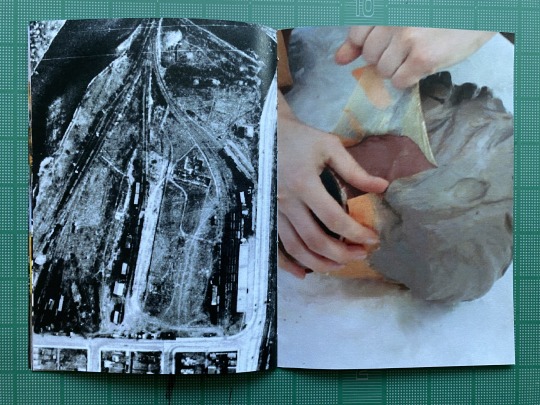
Fig. 11, Starr, Riel. Spread from Reading Marilyn Dumont to A Railway Berm, 2023. Image courtesy of the artist.
The most recent work in A Spectacle of Me for You: Otipemisiwak Fantasy is a performance titled Reading Marilyn Dumont to A Railway Berm (2023) in which OFH, sporting a new fringed leather jacket and matching tan suede Manitobah Mukluks reads poetry by Métis poet, author, and academic Marilyn Dumont to the dismantled railway that once entered the former Fort Calgary. The title of the poem is A Letter to John A. MacDonald and the author directly addresses the first prime minister and informs him of his failed railroad project. In addition to the Louis Riel mask, I had also begun the process of making a mask in the image of John A. MacDonald but had not found a use for it until reading the poem by Dumont. The performance is documented in the form of a hand-bound zine using imitation sinew, with photo documentation of the performance of reading to the railroad and John A. as well as the action of “scalping” the John A. mask to remove it from the base. This is contrasted with documentation of the site using both historical and modern images taken during the performance and sourced from the museum of Fort Calgary’s website (fig. 11).

Fig. 12, Starr, Riel. Prairie Vessel, 2022. Image courtesy of the artist.
Prairie Vessel (2022) (fig. 12) is an exploration of Métis aesthetics of survivance, specifically the Red River Cart and its material and physical qualities, as well as its history and symbolism in our culture. The Red River Cart is represented in the contemporary Métis Nation of Alberta and Manitoba Métis Federation logos, the cart being revered as an important symbol of survivance to our people. Historically the carts were built without the use of standardised measurement or plans, however there were two defining design features common to all Red River carts; their two wheels and lack of any metal joinery, only using wood and rawhide in their construction. The research for this piece included scouring online databases like the Louis Riel Institute and the Gabriel Dumont Institute in order to find any sort of construction plans for the carts. George Fayant is one of the few Métis makers with this skill, and has been building them for over two decades, since 1998 (Patterson). Prairie Vessel (2022) is a study of Métis material culture out of the need to preserve a lesser-known art form, and to practise survivance both personally and for my people so that I may keep knowledge and ways of making beyond alive, to keep them thriving in the spirits of my ancestors and all living Métis.
I am just one Halfbreed, but I am still Halfbreed. My ancestors' spiritual and genetic material makes up my personhood and part of that personhood is in all Métis. I do not yet know who I am to my people, but I carry an important name and an old spirit. I would like to be a trickster, “lotta raven in that one,” they’ll say (Maracle, 19). I would like to be like old James Bird Jr., trickster, trader, smart as a whip, a deadly sense of humour, and mean to missionaries. Wiisakayachack, Nanabush, Bluejay, Raven, Coyote, Li P’tchi Mond, Chi Jean, James Bird Jr., I long to be a chakapish.
Works Cited
Ahmed, Sara. Queer Phenomenology: Orientations, Objects, Others. Duke University Press, 2006.
Barkwell, Lawrence. Métis Mythology and Folklore: Mythological figures. Métis Museum, Louis Riel Institute.
Belcourt, Billy-Ray, et al. A History of My Brief Body. Two Dollar Radio, 2020.
Bigelow, Katheryn. Point Break. Twentieth Century Fox, 1991.
Danger, Dayna. “The most Native BDSM thing ever”: Dayna Danger’s Fetish Masks Challenge Indigenous Sexuality Taboos. CBC Radio, 2018.
Danger, Dayna. Big’Uns: Adrienne. The Resilience Project, 2017.
Dumont, Marilyn. A Really Good Brown Girl. Brick Books, 1996.
The Hudson’s Bay Company History Foundation. The Bay, “Shopping is Good” advertisement, 2000.
Junker, Jocelyn. Capture Photo Festival: Jessie Ray Short’s Wake Up! (2015), 2022.
Maracle, Lee. A Really Good Brown Girl: Introduction. Brick Books, 2019.
Patterson, Dayne. Red River cart unveiled at U of S celebrates Métis presence on campus. CBC News, 2022.
Rice, Ryan, and Carla Taunton. “Buffalo Boy: Then and Now.” Fuse Magazine, vol. 32, no. 2, 2009, pp. 18–25.
Sealey, D. Bruce. Stories of the Métis /. Manitoba Metis Federation Press, pg. 1, 1973.
Short, Jessie Ray. Wake Up!, 2015. Mount Pleasant Community Art Screen, 2022.
Stimson, Adrian, “Buffalo Boy: Then and Now.” Fuse Magazine, vol. 32, no. 2, 2009, pp. 18-25.
St-Onge, Nicole J.M. “The Dissolution of a Métis Community: Pointe à Grouette, 1860–1885.” Studies in Political Economy 18.1 (1985): 149–172. Web.
Toneguzzi, Mario. Hudson’s Bay Co. Launches Strategic Rebranding Amid Privatization. Retail Insider, 2020.
Vizenor, Gerald. Fugitive Poems: Native American Indian Scenes of Absence and Presence. Lincoln, Nebraska: First Bison Book 2000, p.15.
Whitehead, Joshua. Full Metal Indigiqueer: Poems. Talon Books, 2017.
Wilson, I. Former Jean Caron Sr. House, Parks Canada, 2002.
#this is my grad paper!!!!!#riel text#undergrad#art writing#contemporary art#indigenous#métis#michif#my work#writing#academia#academic writing#my practice#indigenous art#first nations art#please read or else!!!
27 notes
·
View notes
Text
You must be miss Granger
You must be miss Granger
https://ift.tt/PtUHXOe
by NonaeMex
Lucius sorrise crudelmente, Hermione Granger si riempì di un mesto luccichio sardonico.
"Piccola, sporca....!"
Ma Hermione Granger - che aveva imparato a sue spese a non fare più incantesimi per rabbonire o soggiogare quell'uomo - decise di puntare dritto al sodo.
Si aprì la vestaglia - pesante, di flanella - che portava sopra la camicia della divisa.
Negli occhi di Lucius balenò un lampo incontrollabile e lei, suo malgrado, rabbrividì.
Il freddo aveva reso i suoi capezzoli turgidi. In quel momento la sua pelle era così pallida da sembrare livida.
Words: 47527, Chapters: 21/?, Language: Italiano
Fandoms: Harry Potter - J. K. Rowling
Rating: Explicit
Warnings: Graphic Depictions Of Violence, Rape/Non-Con, Underage
Categories: F/M, Multi
Characters: Draco Malfoy, Lucius Malfoy, Hermione Granger, Hermione Granger's Mother, Hermione Granger's Father, Rita Skeeter, Dolores Umbridge, Narcissa Black Malfoy
Relationships: Hermione Granger/Draco Malfoy, Hermione Granger/Lucius Malfoy
Additional Tags: Rape/Non-con Elements, Muggle/Wizard Relations, Manipulation, Evil Lucius Malfoy, Draco Malfoy is Bad at Feelings, Twisted, Dark Magic, Violence
via AO3 works tagged 'Hermione Granger/Draco Malfoy' https://ift.tt/hPHjG9f
February 22, 2024 at 10:04PM
4 notes
·
View notes
Text
names of the ninth : a semi serious etymological analysis
in which i try to apply my degree in classical letters and the two classes i took in linguistics to decipher the names of the ninth house.
Aiglamene i think could mean "to be shined on". αἴγλη (aigle) in ancient greek literally means "the light of the sun or the moon, gleam, shine". the -mene particle could come from the present participle of greek mediopassive voice, ex. names like "filomena" in italian which simply mean "beloved" in greek (φιλουμένη), even though αἴγλη is a noun and not a verb.
this seems to be a ninth house naming convention because Pelleamena has the same particle, but i could only find the adjective πελλός (pellos) which means dark or grey, which would make her name mean "darkened, greyed". but pelleamena is weird because if you split her name like "pelle amena" it literally means "beautiful skin" in latin, with only some minor grammatical mistakes.
Ortus is fun because ortus in latin is yet another particible, this time meaning "rising", but in greek ὀρθός (orthos) means "straight".
Mortus and Crux are pretty straightforward. Mortus means "dead" and Crux means "cross".
Glaurica is another fun one (i know she's technically VIII but I spent a lot of time on this). In ancient greek and latin, you can add the particle -ικος (-ikos) to make an adjective out of a noun. you can see this especially with medical terminology: ἧπαρ (epar, liver) + ικος = ἠπατικός (epaticos, hepatic, relative to the liver). i can think of two possible origins for the root Glaur-: either γλαυκος (glaukos), meaning "gleaming, grey", with some fun linguistic hijinks turning the k sounds into a r sound, but honestly if i was a linguist i would not be very thrilled with this theory. what i think it's more likely is that the name Aglaurus, the name of a Athenian princess meaning "dewfall", eventually dropped the first letter in pronunciation. honestly, we do not know where they take these names from: if it's oral history, it's a little bit more mysterious, but if it's a written tradition, all it takes is for one scribe to fuck up and forget an a- for the name to change forever. i'm going with this theory, so Glaurica means "of Aglauros" or "of dewfall".
Lachrimorta is another latin one. lacrima means "tears" in latin, even though the the "h" is wrong. what's cool here is we can suppose a corruption from lacrimosa (tearful) to lacrimorta ("-morta" meaning, of course, "dead") to lachrimosa. if they had no idea what lacrimosa meant, it could easily get corrupted to another word they had more familiarity with, like mortus, -a, -um.
Last one is Aisamorta which is, once again, fun because it mixes greek and latin. αἶσα is means "destiny" in the sense of "allotted part". morta is - you guessed it - "dead".
The last one i can make something out of is Priamhark Noniusvianius. His first name obviously comes from Priam, from the Iiad, but his surname is a combination of nonius-, technically the name of roman family, while nonus means ninth and -vianus, which is a patronymic participle, so Noniusvianus means "of the Ninth family". A really cool linguistic explanation would be if it was a calque (or loan translation) from things like Octavianus but, once again, i have no idea how the transmission happened or how recent these forms are.
#the locked tomb#the ninth house#aiglamene#ortus nigenad#idk how to tag this. is this anything#is this thing on?#added a read more for convenience
22 notes
·
View notes